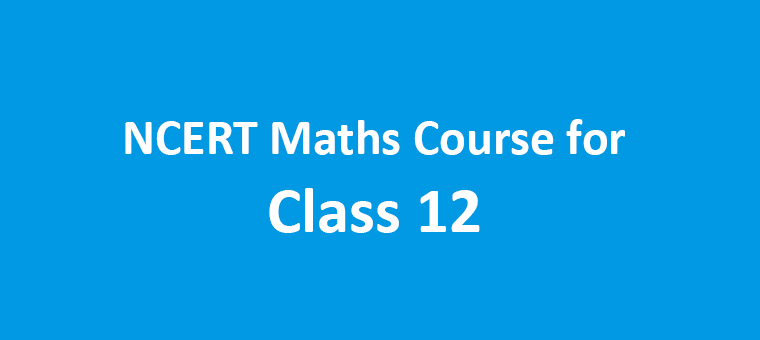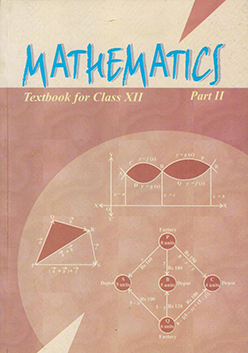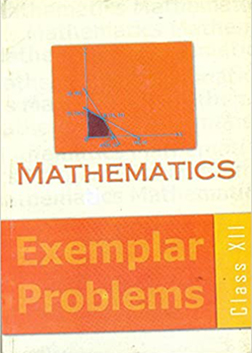NCERT 12th Maths Course and Tutorial
Posted by: Admin | 28 May 2020

Standard 12th is the turning point in the life of every student who aspires to achieve something in his life. His devotion to work and a healthy foundation is the basis which can pave his road to success. After being a matriculation pass, every student has to decide what he has to choose for his life, which will prove to be the best for his nearing future. Some may want a stream because of passion or to follow their dreams; some maybe because of family pressure for a particular direction and imitating their peers.
Whatever happens, whether it's out of interest or imposition, one has to pursue the best from it because it is the deciding factor for the future waiting for our arrival. We need to make our subjects strong so that we don't regret later that a little bit of extra effort might have proven useful.
In this article, I will be putting light on the subject, which is the basis of all without any stream distinction. The course loved by many, the one with the play of numbers that is Mathematics. This is the subject which nurtures us from the very beginning of our school life and continues till ages.
Mathematics of standard 12th is developed based on the foundation standard in class 11th. Standard 12 Mathematics is quite the core for the students who are planning to pursue Engineering or any statistics field.
To achieve success in any exam, NCERT 12th Mathematics plays a vital role. All the concepts frequently asked in competitive exams are thoroughly covered. The topics are explained elegantly with simple steps and innovative approaches.
This book is written by content experts on the standard 12th Mathematics CBSE syllabus. Most of the boards recommend NCERT as a religious book for their studies. They are helpful to candidates who aspire to score good and easily crack competitive exams.
The way of presenting the content is quite beautiful as it is quite a student-friendly. The contents start from the very basics and go till the most difficult.


Now coming onto the syllabus covered in the book, which every standard 12th student should be well acquainted with.
- Ch. 1: Relations and Functions
- 1.1 Introduction
- 1.2 Types of Relations
- 1.3 Types of Functions
- 1.4 Composition of Functions and Invertible Function
- 1.5 Binary Operations
- Ch. 2: Inverse Trigonometric Functions
- 2.1 Introduction and Basic Concepts or Inverse Trigonometric Functions
- 2.2 Properties of Inverse Trigonometric Functions
- Ch. 3: Matrices
- 3.1 Introduction
- 3.2 Matrix
- 3.3 Types of Matrices
- 3.4 Operation on Matrices
- 3.5 Transpose of a Matrix
- 3.6 Symmetric and Skew Symmetric Matrices
- 3.7 Elementary Operation (Transformation) of a Matrix
- 3.8 Invertible Matrices
- Ch. 4: Determinants
- 4.1 Introduction
- 4.2 Determinant
- 4.3 Properties of Determinants
- 4.4 Area of a Triangle
- 4.5 Minors and Cofactors
- 4.6 Adjoint and Inverse of a Matrix
- 4.7 Applications of Determinants and Matrices
- Ch. 5: Continuity and Differentiability
- 5.1 Introduction to Continuity and Differentiability
- 5.2 Exponential and Logarithmic Functions
- 5.3 Logarithmic Differentiation
- 5.3 Logarithmic Differentiation
- 5.4 Derivatives of Functions in Parametric Forms
- 5.5 Second Order Derivative
- 5.6 Mean Value Theorem
- Ch. 6: Applications of Derivatives
- 1.1 Introduction
- 1.2 Types of Relations
- 1.3 Types of Functions
- 1.4 Composition of Functions and Invertible Function
- 1.5 Binary Operations
- Ch. 7: Integrals
- 7.1 Introduction to Integral Calculus
- 7.2 Integration as an Inverse Process of Differentiation
- 7.3 Methods of Integration
- 7.4 Integrals of Some Particular Functions
- 7.5 Integration by Partial Fractions
- 7.6 Integration by Parts
- 7.7 Definite Integral
- 7.8 Fundamental Theorem of Calculus
- 7.9 Evolution of Definite Integrals by Substitution
- 7.10 Some Properties of Definite Integrals
- Ch. 8: Application of Integrals
- 8.1 Introduction
- 8.2 Area under Simple Curves
- 8.3 Area Between Two Curves
- Ch. 9: Differential Equations
- 9.1 Introduction to Differential Equations
- 9.2 Basic Concepts
- 9.3 General and Particular Solutions of a Differential Equation
- 9.4 Formation of a Differential Equation whose General Solution is given
- 9.5 Methods of Solving First Order, First Degree Differential Equations
- Ch. 10: Vector Algebra
- 10.1 Introduction to Vectors
- 10.2 Some Basic Concepts
- 10.3 Types of Vectors
- 10.4 Addition of Vectors
- 10.5 Multiplication of a Vector by a Scalar
- 10.6 Product of Two Vectors
- Ch. 11: Three Dimensional Geometry
- 11.1 Introduction
- 11.2 Direction Cosines and Direction Ratios of a Line
- 11.3 Equation of a Line in Space
- 11.4 Angle between Two Lines
- 11.5 Short Distance between Two Lines
- 11.6 Plane
- 11.7 Coplanarity of Two Lines
- 11.8 Angle between Two Planes
- 11.9 Distance of a Point from a Plane
- 11.10 Angle between a Line and a Plane
- Ch. 12: Linear Programming
- 12.1 Introduction to Linear Programming
- 12.2 Linear Programming Problem and its Mathematical Formulation
- 12.3 Different Types of Linear Programming Problems
- Ch. 13: Probability
- 13.1 Probability Introduction
- 13.2 Conditional Probability
- 13.3 Multiplication Theorem on Probability
- 13.4 Independent Events
- 13.5 Bayes' Theorem
- 13.6 Random Variables and its Probability Distributions
- 13.7 Bernoulli Trials and Binomial Distribution
All the chapters are well covered, and the student can thoroughly revise all the above topics quickly. They include real-life examples and questions which help us to build our mind and shape it accordingly.
Students must deeply go though all the subtopics mentioned above as these are not only helpful for scoring in boards but also in competitive exams like JEE.
There is one supplementary book with NCERT 12th Mathematics that is Maths exemplar. This is an excellent book that has Multiple Choice Questions (MCQ) and subjective ones too. These two books are the one which paves your way for a glorious success.